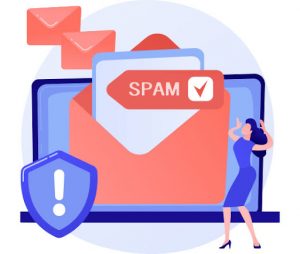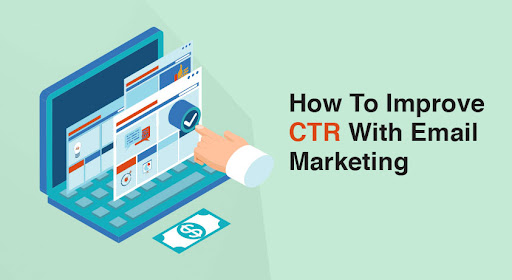There’s no denying that email marketing is a powerful tool for businesses. You can use email marketing to educate, engage, and convert consumers. But with so many other forms of digital marketing — from social media ads to mobile push notifications — how can email marketing help you improve your click-through rate (CTR)?
This article will look at how to improve CTR with email marketing.
What Is The Email Click-Through Rate?
The email click-through rate is the percentage of people who click on the links in your email.
This is a crucial metric for marketers because it tells you how many people read your emails and act on the links within them. If you have a low click-through rate, it could mean that your content isn’t resonating with customers.
How To Calculate Email Click-Through Rate?
To calculate your own CTR, simply divide the number of clicks by the total emails sent:

For example: If you sent out 1,000 emails and had 100 clicks on links within those emails, your click-through rate would be 10%: 100 / 1,000 = 10%.
12 Tips To Improve Email Click-Through Rate
Email click-through rate is one of the most important metrics you can track. It tells you how many people are clicking on links in your email, and it’s a great way to get an idea of how well your campaigns are working.
But what if you want to improve your click-through rate? Don’t worry—I’ve got some tips for you.
1. Make sure your subject line is interesting.
There’s nothing worse than getting a boring email with a subject line that says, “Hey.” If you want people to open your email, you need to make it clear what they will get out of it.
Make sure your subject line is interesting:
- It should be relevant to the email’s content.
- It should be short and snappy but still, contain enough information to pique the reader’s interest.
- It shouldn’t have spammy words, like “free” or “win,” because that looks gross.
- It shouldn’t be misleading, so ensure it matches what the reader will read in the email!
Tools like Klaviyo can personalize the email subject lines with tags. However, there is a learning curve to using these features. If you’re unsure how to use them, you can look for Klaviyo alternatives .
2. Add images and videos to your emails

It’s no secret that images and videos are some of the best ways to grab someone’s attention in email marketing campaigns. But did you know that including these elements in your emails could increase their click-through rate?
That’s right! According to studies, including images and videos increases the click-through rates of emails !
That’s because humans are visual creatures, and we tend to respond better to visual stimuli than text-based ones. Images and videos help break up the monotony of reading long blocks of text, making it easier for recipients to understand what you’re saying.
3. Test different call-to-action buttons.
Your email should have a clear call to action, or CTA, that asks your readers to take a specific action. For example, “Learn more,” “Sign up,” or “Buy now” are all great CTAs.
Some CTAs may be more effective than others depending on your audience and the type of offer you’re promoting. To determine which CTAs work best, test out different ones in emails and see which ones generate the most clicks.
If you’re not sure where to start, here are some common types of buttons you can test:
- The “secret” button—this button is hidden and only appears when a user hovers over an image or link with her cursor. It’s a great way to encourage users to explore beyond the main message!
- The “call-to-action” button—this type of button takes readers directly from your email to another website. If you need this on your website, you should hire a frontend development team , and they will make it for you.
4. Make sure all your links are working properly.
When it comes to click-through rates, nothing is more important than ensuring that all your links are working properly. If you have links that don’t take users to the right page or if they take them to an error page, then this can have a serious impact on your click-through rate.
Make sure that your links work and that you’ve tested them. You can do this by sending yourself an email with a link, clicking it, and checking if you end up on the page you intended. If not, try using different browsers or testing from different devices.
5. Send emails at optimal times.
When you send an email, there’s a good chance that the recipient will see it on a mobile device—and studies have shown that click-through rates are higher when emails are opened on mobile devices than on desktops.
It stands to reason, then, that you should consider when your readers are most likely to be using their phones and sending your emails at those times.
If you’re sending an email blast to a large list of recipients and want to maximize your click-through rate, for example, sending the email during peak hours (when people tend to check their phones) will probably help get more people opening your message and clicking through to your site.
6. Create a compelling offer

You don’t want to email your customers and ask them to “check out our new site!” That’s boring, and it doesn’t compel them to take action. Instead, you should create an offer that promises something enticing to the customer—a discount, a free trial period, or an exclusive product.
Your email will be ignored if you don’t create an irresistible offer. Your offer should include an incentive that makes your reader want to click and take action.
7. Keep your content short and conversational (this is important!)
This is a big one. The average length of an email is one of the biggest factors that affect click-through rate, so make sure to keep your emails short and to the point. Your content should be scannable so they can quickly scan it and get the necessary information.
This is especially important when you’re sending out a link to another site or a video—you don’t want your subscribers to lose interest before they even get there!
8. Includes social media icons
This is a no-brainer. Include social media icons in your email footer if you want more clicks.
It’s no secret that social media is a powerful tool and best place to advertise a business. So why not include social media icons in your emails? It’s a great way to encourage people to share your email with their friends and followers, which will help you reach more people without spending any extra money.
9. Create a sense of urgency
People are busy. They have a lot of things to do, and they don’t want to waste time reading your emails. That’s why you should create a sense of urgency in your emails: let them know that they need to act now, or they’ll miss out on something great, like an exclusive offer or limited-time opportunity.
Make sure that your subject line implies something important in the email, and make the first sentence of the body of your email as compelling as possible to start getting people’s attention.
10. Don’t spam people with too many emails each day.

One of the easiest ways to improve your email click-through rate (CTR) is not to spam people with too many emails daily.
It’s tempting, especially when you want to keep your business top of mind, but the truth is that no one likes getting bombarded with emails every day or hour. Your email clients may mark you as a spammer or unsubscribe from your list, making it hard for you to maintain a healthy open rate in the future.
If you want customers to open and respond to your email marketing campaigns, stick with a maximum of two per week.
11. Make sure your content is relevant to the recipient.
When sending an email, it’s crucial to ensure that the content is relevant to the recipient. This can be challenging since so many variables are at play: you must consider your audience, their interests, and the time of day you’re sending the email.
For example, sending an email about a new product release might be more effective during business hours when people are likely to be at work. If you want to improve your click-through rate, ensure that your content is relevant and timely.
You can also utilize email service providers for dynamic content. But services like Mailchimp don’t provide dynamic email templates. In that case, try these Mailchimp alternatives.
12. Use a professional-sounding email address.
If you want people to click on your emails, you must start looking like a professional. If your email address is something like “bob@hotmail,” then you’re not going to get a lot of clicks. You want people to click on your emails, so make sure your email address has some credibility.
Use an email address that is easy to remember, like your name or company name, and doesn’t have any typos or spelling errors. For example, like [first name last name]@[your business].com. If you are unsure of this digital marketing companies nj might be the right choice.
Wrapping Up!
Now you know how to improve CTR with email marketing.
Now it’s time to put what you’ve learned into practice! Start by evaluating your current email marketing strategy, and decide if it needs a revamp. If so, take the time to make updates to your strategy and test them out before implementing them fully. It’s a good idea to get help from an email marketing agency if you’re starting out.
Good luck!
Author Bio:
Janani H is a Content Marketer at TargetBay , an Ecommerce Marketing Cloud used by thousands of online stores across the globe. She enjoys writing about the power of emails in marketing, and when she isn’t writing, she can be found riding the Metro and trying out new local foods. LinkedIn





